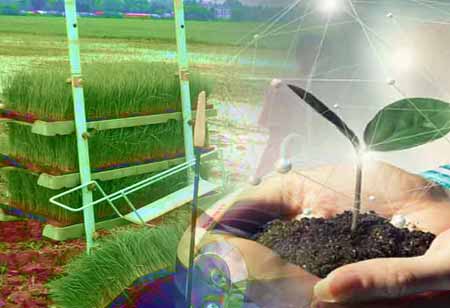Thank you for Subscribing to Agri Business Review Weekly Brief
How To Invest In A Farmland?
According to the United States Department of Agriculture, America has around 911 million acres of farmland (USDA). Farmers and ranchers own about 61 percent of the land they utilize, with the remainder rented from third-party landlords.

By
Agri Business Review | Monday, May 30, 2022
Stay ahead of the industry with exclusive feature stories on the top companies, expert insights and the latest news delivered straight to your inbox. Subscribe today.
The key reason more investors are turning to farmland as an investment possibility is that it has a lengthy track record of generating solid returns.
Fremont, CA: According to the United States Department of Agriculture, America has around 911 million acres of farmland (USDA). Farmers and ranchers own about 61 percent of the land they utilize, with the remainder rented from third-party landlords. While other operators own 8 percent of this land, investing groups possess 31 percent of America's farmland, with non-operating individuals or partnerships owning 21 percent and companies, trusts, or other owners owning 10 percent.
As a result of this distribution, non-farming investors control a relatively small portion of the country's farmland. That portion, on the other hand, has been expanding as more investors add profitable farmland to their holdings.
How to invest in farmland?
While tenant farming in America dates all the way back to the aftermath of the Civil War, the farming sector continues to be an atypical asset class for real estate investors. This is largely due to the fact that farmers, both active and retired, hold the majority of cropland and pastureland in the country.
However, as new investment opportunities in the industry have developed in recent years, farmland has grown in popularity as an asset class for investors. Here's how an investor might diversify their holdings using farms.
Buy land directly
The most straightforward strategy to invest in farmland is to buy viable cropland or pastureland and rent it to a farmer or rancher. This technique of investing in agriculture entails a significant initial expenditure, as the investor will almost certainly need to acquire a large plot of land. According to the USDA, the average price of farmland was $4,130 per acre in 2018, while pastures were roughly $1,390 per acre. Meanwhile, investors rented cropland for an average of $138 per acre and pastureland for an average of $12.50 per acre, implying cash yields of 3.3 percent and 0.9 percent, respectively.
Investing through a crowdfunding platform focused on farming
Several companies have developed in recent years to provide internet-based access to farmland assets. However, the majority of these farmland crowdfunding platforms are only available to accredited investors - those with a net worth of at least $1 million, excluding equity in their primary residence, or a household income of at least $200,000 in each of the preceding two years, or $300,000 if married.





